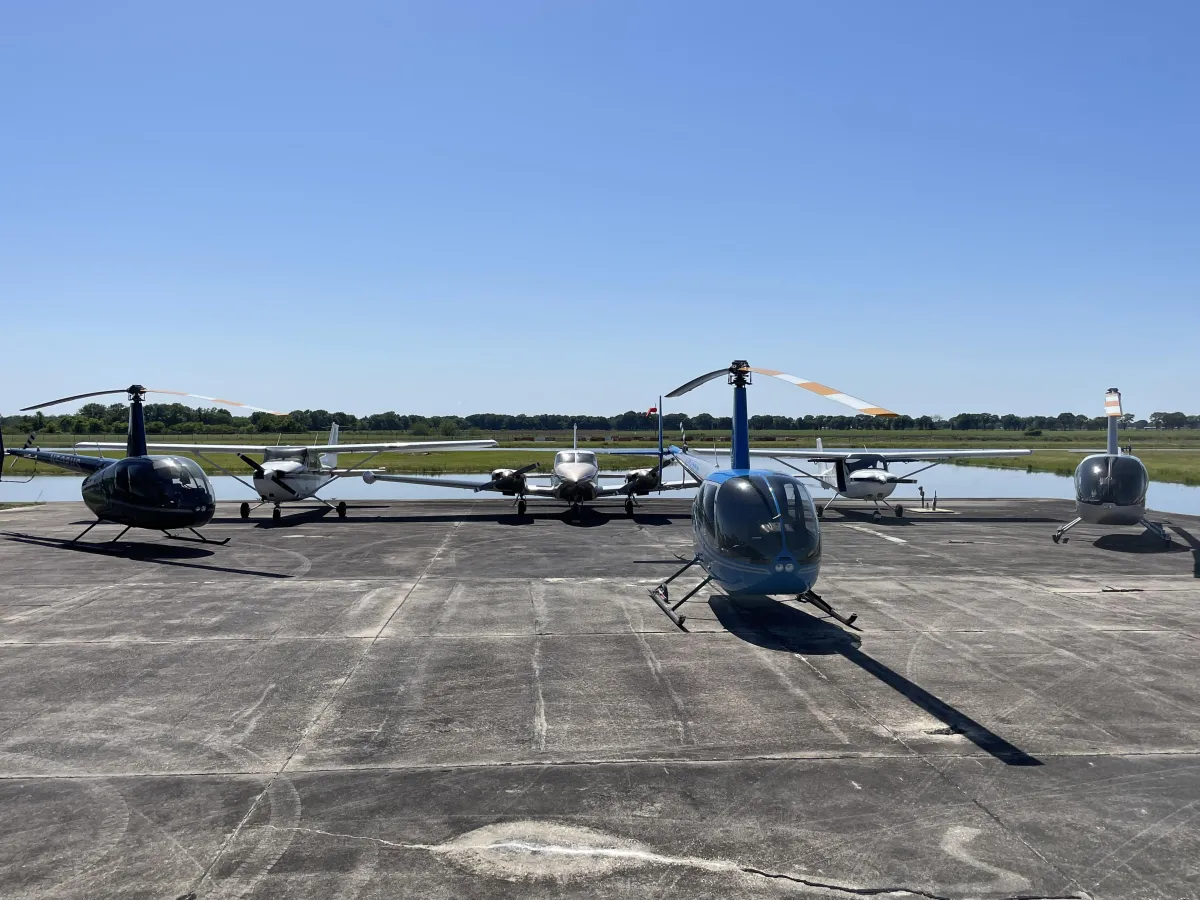Start Your Aviation
Journey Today
Flight Training in Helicopters and Airplanes. Open 7 Days a Week,
Plus Aircraft Sales and Maintenance—All in One Place.
Take flight with expert Part 141 training programs for helicopters and airplanes. Explore flexible options tailored to your goals, with access to aircraft sales and professional maintenance services.
Part 141 Flight Training
Helicopter or Airplane
Aircraft Sales
Robinson Helicopter Dealership
Part 145 Maintenance
Helicopter or Airplane
Four locations across Louisiana




Robinson Helicopter Dealership & Service Center
Aviation Academy of Louisiana is proud to be the only authorized Robinson Helicopter dealership and Part 145 certified service center in Louisiana, offering exclusive access to the latest Robinson models and services.


Discover how Ian went from complete beginner to a successful pilot career in just 2 years.
See why pilots are coming to Louisiana to finish their training with accelerated courses.See w

Comprehensive Aviation Training and Services in Helicopters and Airplanes.
Whether you're pursuing a helicopter or airplane certification, accelerated programs are available, or you can train at your own pace.
Housing is available for out of town students and with connections to local FAA-certified DPEs, checkrides are conducted on time, keeping your progress on track. For added convenience, aircraft sales and maintenance services are available to support every aspect of your aviation journey.
Why Train Here?
open 7 days a week
timely checkrides
Accelerated programs
4 locations
top notch instructors
housing available
modern facilities
aircraft sales
Part 145 Maintenance
In addition to top-tier flight training, Aviation Academy of Louisiana is the only authorized Robinson Helicopter dealer and Part 145 certified service center in Louisiana, offering sales, maintenance, and support for Robinson aircraft.
Get Started in 3 Simple Steps
Step 1.
Schedule a Discovery Flight
Step 2.
Create a Custom Training Plan
Step 3.
Start Training
Ready to get started?
See why pilots are coming to Louisiana
to finish their training with accelerated courses.
Lizzy, an accomplished airplane pilot, took a Discovery Flight in a helicopter. In this video, she shares her experience.




FOLLOW US
Aviation Academy of Louisiana
705 Hangar Dr
New Iberia, LA 70560
337-591-5680
COMPANY
CUSTOMER CARE
LEGAL
Copyright 2024 Aviation Academy of Louisiana All Rights Reserved.